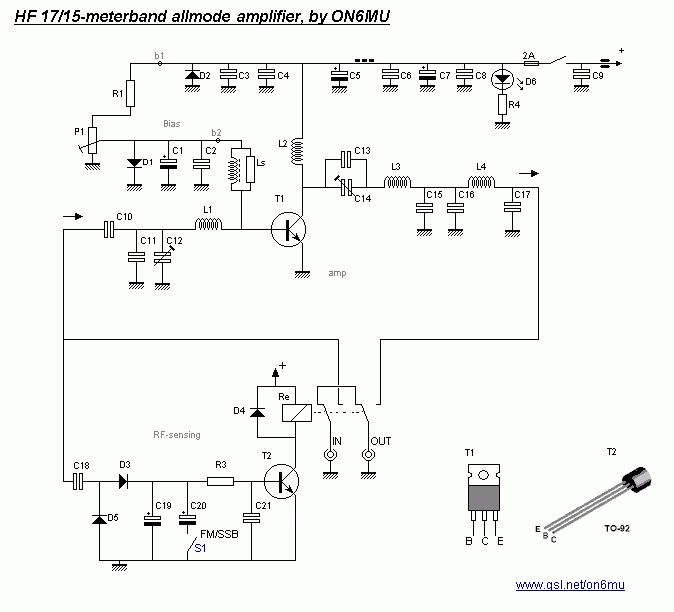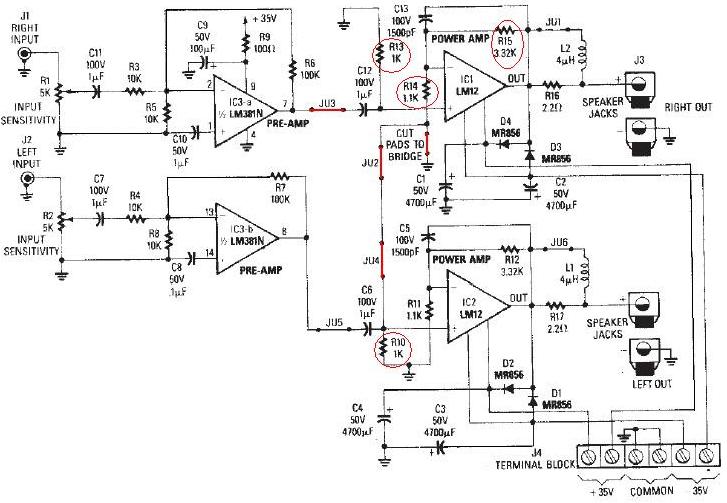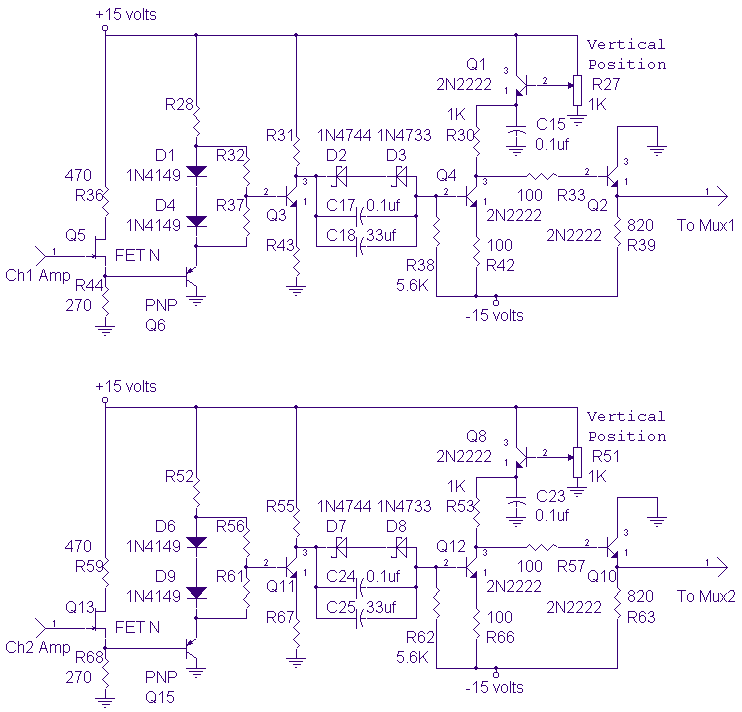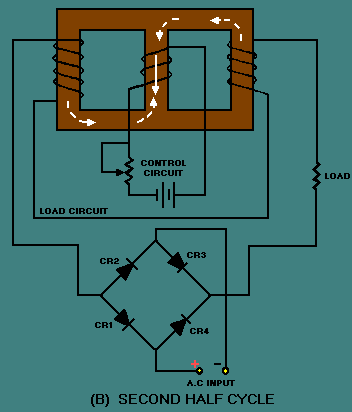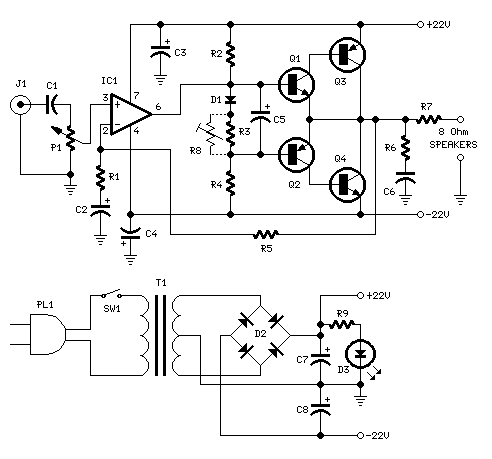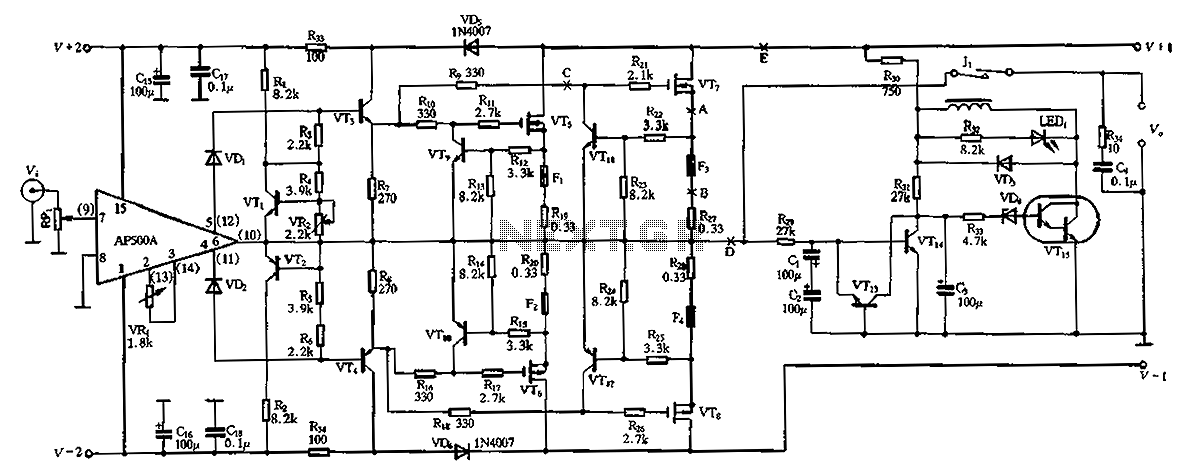
For low-noise amplifier OP amplifier RIAA compensation
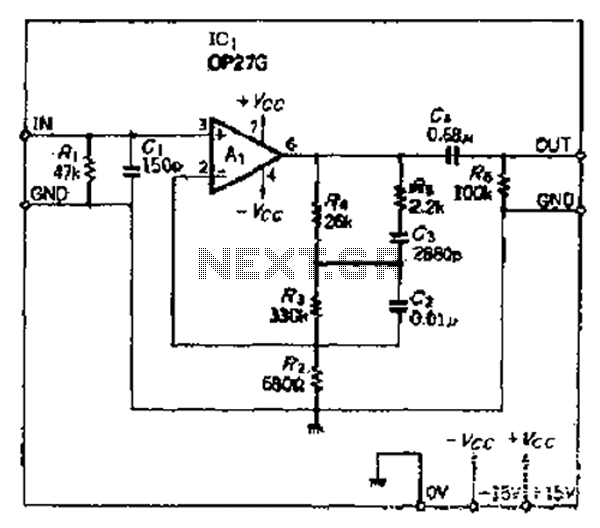
A common telecoil follows the MM formula (magnetic-acting) and has an impedance of approximately 600 ohms to effectively receive signals. It is necessary to reduce the impedance in the high-frequency segment, which is achieved by placing a 150pF capacitor in parallel with the input. The OP27 is a low-noise, high-precision operational amplifier characterized by a low input offset voltage and minimal drift. This allows for a DC-coupled feedback loop that enhances low-frequency performance. The compensation circuit is defined by three time constants, allowing for various CR value selections.
The common telecoil, adhering to the MM formula, operates efficiently at an impedance of around 600 ohms, which is critical for optimal signal reception. The design involves strategically placing a 150pF capacitor in parallel with the input to mitigate high-frequency impedance issues, ensuring that the telecoil can effectively capture and process magnetic signals.
Incorporating the OP27 operational amplifier into the circuit enhances performance due to its low-noise characteristics and high precision. The low input offset voltage and minimal drift of the OP27 are essential for maintaining signal integrity, particularly in sensitive applications. The feedback loop is DC-coupled, which is advantageous for improving the low-frequency characteristics of the overall circuit. This configuration allows for better handling of low-frequency signals, which is particularly important in telecoil applications.
The compensation circuit utilized in conjunction with the OP27 is defined by three distinct time constants, which can be adjusted based on the specific application requirements. This flexibility in selecting CR values allows for fine-tuning of the circuit's response, enabling it to adapt to various operational conditions and signal characteristics. The careful design and selection of components in this circuit ensure reliable performance and high fidelity in the reception of magnetic signals. Common telecoil is MM formula (magnetic-acting), about 600 in order to take the received signal, should reduce the impedance in the high segment, in parallel with 150pF input p ower capacity o OP27 is a low-noise, high-precision amplifier OP, which the input offset voltage is small, drift is small, so the feedback loop DC coupling, to improve the low-frequency characteristics. Because the compensation circuit is determined by three time constants, so CR values can have a variety to choose from.
The common telecoil, adhering to the MM formula, operates efficiently at an impedance of around 600 ohms, which is critical for optimal signal reception. The design involves strategically placing a 150pF capacitor in parallel with the input to mitigate high-frequency impedance issues, ensuring that the telecoil can effectively capture and process magnetic signals.
Incorporating the OP27 operational amplifier into the circuit enhances performance due to its low-noise characteristics and high precision. The low input offset voltage and minimal drift of the OP27 are essential for maintaining signal integrity, particularly in sensitive applications. The feedback loop is DC-coupled, which is advantageous for improving the low-frequency characteristics of the overall circuit. This configuration allows for better handling of low-frequency signals, which is particularly important in telecoil applications.
The compensation circuit utilized in conjunction with the OP27 is defined by three distinct time constants, which can be adjusted based on the specific application requirements. This flexibility in selecting CR values allows for fine-tuning of the circuit's response, enabling it to adapt to various operational conditions and signal characteristics. The careful design and selection of components in this circuit ensure reliable performance and high fidelity in the reception of magnetic signals. Common telecoil is MM formula (magnetic-acting), about 600 in order to take the received signal, should reduce the impedance in the high segment, in parallel with 150pF input p ower capacity o OP27 is a low-noise, high-precision amplifier OP, which the input offset voltage is small, drift is small, so the feedback loop DC coupling, to improve the low-frequency characteristics. Because the compensation circuit is determined by three time constants, so CR values can have a variety to choose from.
